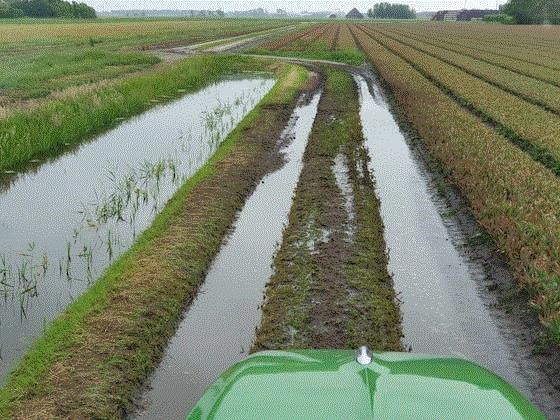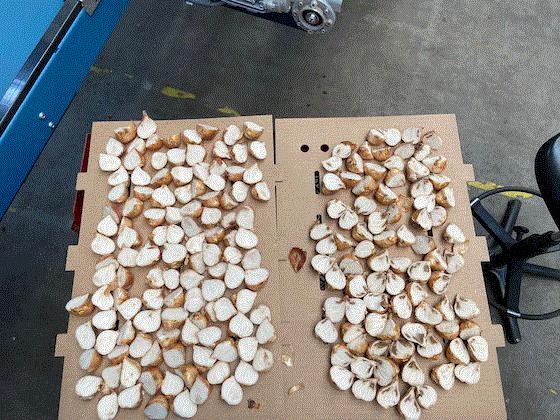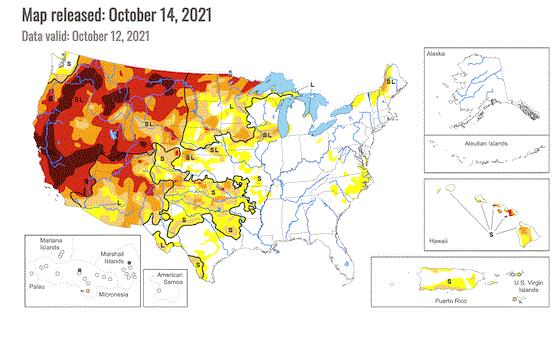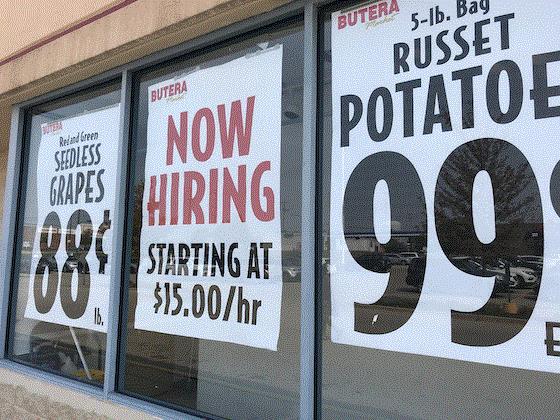Freight shipping prices
I was trying to find some positive news about the global shipping market, and I thought I had some, as freight prices from China to the U.S. dropped a bit last week. But then they started back up and rising oil prices are liable to lead to freight surcharges, say the experts. Here’s a summary of the week from the website Freightos.com—handy for knowing the costs of containers to and from various regions of the globe:
Production in China slowed down this week during the Golden Week holiday. With power outages shuttering factories and with ocean delays, it’s unlikely that shipments not already moving will make it in time for the holidays.
Transpacific ocean rates stayed level this week after a significant drop a week ago. But rising oil prices could mean that carriers will increase fuel surcharges at the end of the month.
 Plus, worsening port congestion and delays at LA/Long Beach are keeping Asia-U.S. prices extremely high at more than quadruple their level a year ago. The congestion may also be responsible for pushing North America-Asia export rates up more than 10% this week to over $1,000/FEU. [FEU means 40-ft. equivalent unit—one 40-ft. container or two 20-ft. containers equal an FEU.]
Plus, worsening port congestion and delays at LA/Long Beach are keeping Asia-U.S. prices extremely high at more than quadruple their level a year ago. The congestion may also be responsible for pushing North America-Asia export rates up more than 10% this week to over $1,000/FEU. [FEU means 40-ft. equivalent unit—one 40-ft. container or two 20-ft. containers equal an FEU.]
The epic delays at LA/Long Beach have sent many importers looking for other options.
But that shift in volumes is now causing congestion at West Coast alternatives like Seattle and Vancouver, and East Coast ports like New York/New Jersey and Savannah.
The non-stop disruptions are impacting many enterprise importers along with smaller shippers. Major retailers like Home Depot and Costco have recently chartered their own container ships to secure some ocean space, and this week Coca-Cola announced that it recently moved a 60K ton shipment in sacks aboard a bulk carrier instead of in containers.

Basically, freight is really expensive and capacity is incredibly tight. Many importers and exporters are willing to pay premiums in addition to these rates just to keep their goods moving, but with continued disruptions this is often not enough.
Plus, with ships stuck waiting at U.S. destinations, like LA/Long Beach, importers and exporters are still struggling with the ongoing container crisis.
Unfortunately, in other words, as you’ve probably heard, there’s no quick relief in sight for both the availability and the cost of shipments from abroad to your greenhouse or garden center. I wish I had better news!

A “choked” bulb supply
Managing editor Jen Zurko has been doing some reporting into a flower bulb shortage. Here’s what she learned:
This past June, parts of the Netherlands saw record-breaking weather of 6 in. of rain within a matter of hours, flooding large areas of tulip bulb fields and leaving them sitting in water for days as growers frantically tried to pump the water into the canals.
“It’s very unusual to get that amount of rain so fast,” explained Dick den Breejen, Senior Advisor for Ednie Flower Bulbs’ Grower Support Team. “The Netherlands, of course, is very flat, below sea level, and they maintain that level through machinery in the bulb fields, keeping the water at a certain level so that the bulbs won’t be sitting in water, but the roots can still reach it. But because you’re already below sea level and you get this amount of intense rain in such a short period of time, the pumps just can’t handle it.”

Photos courtesy of Ednie Flower Bulbs.
After tulip bulbs are harvested, they go through an x-ray machine to make sure the inside is normal and disease-free. But most of the bulbs that were underwater after the June storms had to be tossed. As they were going through the x-ray, many of them had “choked” centers. (Dick said to think of a choked bulb like an egg with a rotten yolk—the outside looks fine, but the inside [the important part] is bad. The result of choked bulbs is you do get a stem, but no flower.)
Fortunately, most of the hyacinth bulbs were already being harvested before the storm came, but millions of tulip bulbs had to go on the compost pile, said Dick.
Bulb suppliers like Ednie were already planning for a bulb shortage because of the high demand stemming from the pandemic. Not only did we see more new gardeners in North America, but the Dutch had their fair share, too. And since almost 100% of the tulip bulb supply are produced exclusively in Holland, the growers there are growing more to meet the demand at home and exporting less.
The first disruptions from the pandemic happened in early spring 2020 when retailers chose food and toilet paper over cut flowers and potted plants, forcing growers to take back product and deal with order cancellations. Because of this, bulb growers cut 20% of their production for this year, meaning there was 20% less product planted in 2021, said Dick’s son Jeffrey and Ednie’s GM. You mix in significant delays in shipping and you’ve got three factors affecting the crop at the same time.
Tulips and Oriental/hybrid lilies had a rough go of it this year, but other bulb crops were able to have closer to a normal year. And, actually, Easter lilies, which are grown in California, have seen one of the best crops in over 10 years. Although parts of California experienced extreme heat and wildfires, the areas where Easter lilies are grown is protected by the micro-climate between the mountains on one side and the Pacific Ocean on the other, so they had a bumper crop this year.

Bulb shortage (continued)
As for other bulb crops, the folks at Ednie are in wait-and-see mode. Calla bulbs are expected to start their harvest at the end of this month, but Dick said they’re not too optimistic since they, along with dahlias, were also under water.
“It all traces back to that June rain, basically,” said Jeffrey. “The callas, dahlias and lilies—they still had a lot of time to grow, whereas the tulips were getting ready for harvest, so they had the most impact.”

So there is a shortage of tulip bulbs this year, but it all depends on what type you grow. If you produce the more traditional single colors, there’s likely to be substitutions available. But if you grow novelty colors or doubles, you’ll have a harder time finding subs. Jeffrey said that it seemed that the novelties were the ones that were affected by the weather the most. So there will be tulip bulbs … just not all of the options you’re used to in a normal year.
“We have the total amount of bulbs that we need, it’s just that we have to do a certain amount of shifting,” said Dick. “For the greenhouse growers, they’re going to get the material. If you wait until the last minute to get the good deal … well, those deals will not be there.”
Which brings us to price. Dick and Jeffrey said that as growers build up their stock of tulip bulbs (which could take about two years) and shipping/freight costs continue to be high, expect prices to go up. To counter this, Dick is suggesting that all of their customers raise their prices at the retail level to counteract the higher input costs. It’s not like other goods and services aren’t experiencing the same thing, so we’re all feeling the pinch from every angle as businesses and consumers.
“Because Easter lilies from the West Coast involve a lot of labor, and labor costs have gone way up, Easter lilies have already gone through a dramatic price increase,” said Dick. “After we sweated it out, a majority of people have accepted it. So if that Easter lily was $5.99 at Walmart last year, they’re going to have to be $6.99. And that’s not a bad thing.
“In this industry, very sadly, we’ve been using flowers as lost leaders. Take the poinsettia. Take the garden mum. And it’s not the consumer. In past years, if you brought a 6-in. lily to the consumer, they would buy it. And if you bring a 12-in. for a lot more money, they will pay because it looks good. So it’s not the consumer—it’s what we bring to the consumer.”
Thanks for the excellent reporting, Jen!
Any comments on the bulb situation? Weigh in HERE.

Drought in the West
Water: Other than sunlight, it’s the most important element that we use to grow plants. And unlike sunlight, there's no man-made, artificial replacement. Which is why we have to pay careful attention to drought, such as the one taking place across much of the western U.S. right now, as shown in the most recent U.S. Drought Monitor map:
 The U.S. Drought Monitor is jointly produced by the National Drought Mitigation Center at the University of Nebraska-Lincoln, the United States Department of Agriculture, and the National Oceanic and Atmospheric Administration. Map courtesy of NDMC.
The U.S. Drought Monitor is jointly produced by the National Drought Mitigation Center at the University of Nebraska-Lincoln, the United States Department of Agriculture, and the National Oceanic and Atmospheric Administration. Map courtesy of NDMC.
This latest map shows that 90% of the West is in drought, and about half of the region can be classified as “severe” or “exceptional.” The drought is especially bad in California and inland regions of Oregon and Washington, but it extends inland to the northern Plains, as well, leading to water cutbacks, out-of-control wildfires, and farmers and ranchers facing more challenges than usual.
One page of the Drought Monitor website includes headlines from recent news stories highlighting the effects of the drought. A few include:
Drought, hay shortages push Central Oregon cattle producers to brink
California drought takes toll on world’s top almond producer
Drought causes short feed crops for livestock
How California’s Drought Puts Pressure On Natural Gas Prices In Texas
Well-Drilling Companies Working Overtime During Minnesota’s Drought
Drought has Milwaukee irrigation companies working overtime
Drought can be beneficial for industries like construction
And the most frightening headline of all:
Pizza Dough Prices May Rise as Dryness Imperils U.S. Wheat
(Find all these stories and more HERE.)
But what I couldn’t find were stories about our segment of agriculture—horticulture and home gardening. If you're in a drought-stricken region, tell me if and how it’s affected your business. Email me at beytes@growertalks.com.

Hemp production declines again
Beating yourself up for not jumping into hemp a couple years ago when it became legal? Maybe instead you should congratulate yourself for not getting caught up by the hype, as this headline from Hemp Industry Daily reveals how challenging the hemp market remains:
2021 Hemp Outlook: Licensed acreage tanks 24% in 3rd year of nationwide production
(It was written by our friend Laura Drotleff, formerly with Meister Media.)
There are several causes in the decline, she reports, including low prices and a lack of regulation by the FDA, which has large consumer goods companies leery about getting into the category.
Also, what interest there is in the crop tends to lie more in the fiber, grain and feed categories, not CBD.
Colorado, Arizona, California, Kentucky and New York are the top five hemp production states. New York has the most indoor production, at 11.2 million sq. ft.
Congrats to Kate!
Congratulations to our good friend Kate Santos, Ph.D., who was just appointed Director, Research and Conservation of Longwood Gardens, the famous 1,000-acre Pennsylvania, botanical garden.

Her job? “Lead the organization’s science-based activities, strategically driving excellence in research, conservation, land stewardship, and ecology with local, national, and global impact.” No small task!
But if anyone can do it, Kate can! She has extensive industry experience, including for Costa Farms and Dümmen Orange. I’m proud that she earned her doctorate at my alma mater, the University of Florida. (Interestingly, she earned her BS degree at the University of New Hampshire, and I attended first and second grade in New Hampshire. Great minds!)
“We are thrilled to have Kate as our new Director of Research and Conservation,” said Longwood Gardens Vice President of Horticulture Sharon Loving. “Kate is a respected botanical expert who has worked on a diverse group of projects to create lasting impacts in the art, science and sustainability of horticulture. Her experience and vision make her a perfect fit for this position.”

Looking for foliage? Come to TPIE!
We all missed it in 2021 due to the darned pandemic, but TPIE (the Tropical Plant International Expo) will be live and in vivid tropical color January 19-21, 2022, at its new (temporary, we think) home at the Tampa Convention Center on Florida’s west coast.
This is a must-attend show if you want to network directly with the liner producers, growers, suppliers and truckers of the hot tropical plants your customers are still craving. I mean, cold-calling a supplier is fine, but it can’t compare to meeting them face-to-face to talk quantities and ship dates. (Plus, it’s much harder for them to say “no” to you when you’ve taken the time to come visit them in their tradeshow booth!)
You can register now AND you can book your hotel room, as they’re sure to go fast.
Go to tpie.org/2022/public/enter.aspx for details about the show and to register.
Did I mention it's in Florida in January? Yeah, another great reason to go!
Is it too soon to think about new varieties for 2023?
Of course not! Especially in this day and age of “order it soon to make sure you get it.” Which is why PanAmerican Seed has just sent out a short list of early release varieties that will give you a chance to sample them a year in advance before adding them in quantity to your 2023 availability.
This year’s 2023 early-release list includes three new Beacon Impatiens mixes—Lindau Mixture, Portland Mixture and Sanibel Mixture—named for famous lighthouses across the globe to, as they say, “shine more light” on color for the shade with high resistance to impatiens downy mildew. They’re also releasing seed for Cool Wave Blue spreading pansy (below) to meet spring-season demand for pansy baskets and landscape color. There’s also a new green cut flower celosia called Sunday and a sun coleus called Ruby Heart.

To see the full list of 2023 early sales products, along with their 2022 new varieties, check out www.panamseed.com/newvarieties.
Let them eat kale!
According to the people who are keeping count, there will be 2 billion more people on the planet by 2050 and they’re going to want to eat! Assuming that some of them will be vegetarians, and the rest will want salad with their steaks, the Northeast Greenhouse Conference and Expo will conveniently be featuring educational sessions on producing hydroponic leafy greens and herbs on November 4.
The day of sessions will feature:
- Specialty Leafy Green Production: Managing the Environment and Culture—Chris Currey, Iowa State University
- Tips for Producing High-Quality, Non-flowering and Flavorful Culinary Herbs by Manipulating Light, CO2 and Temperature—Roberto Lopez, Michigan State University
- Water and Nutrient Management for Leafy Greens—Neil Mattson, Cornell CCE
- Understanding Greenhouse Climate Control for High-Yielding Leafy Greens and Herbs—Neil Mattson, Cornell CCE
- Managing Diseases on Herbs—Mary Hausbeck, Michigan State University
- Practices to Have an Effective IPM and Biocontrol Program—Ron Valentin, Bioworks, Inc.
The biennial Northeast Greenhouse Conference & Expo is co-sponsored by New England Floriculture, Inc., a group of grower representatives from the Northeast, augmented by university and cooperative extension staff in each state who specialize in greenhouse crops and management.
The full program is on the NEGC website. Register online at cvent.me/L43loN.

Finally …

You know wages are up and workers are scarce when the local grocery store is advertising $15 wages alongside their 88-cent grapes and 99-cent spuds.
This is at one of my local retailers, but it’s a nationwide phenomenon according to THIS WaPo article that says restaurant and grocery workers are more often than not earning more than $15 an hour. Which makes it that much harder for a greenhouse to offer less than that and still attract talented individuals. I mean, if you can’t even compete against a bag boy or fast-food position …
Well, anyway, we're working on our annual Wage & Benefit Survey—what? You haven’t taken it yet? Come on, it’s just six minutes, and that’s if you linger over the questions. You can win a Yeti cooler. AND you'll be contributing to the benefit of your industry! Click HERE.
If you’re a retailer, take our retailer survey HERE.
Speaking of labor, next time, I'm going to have an interesting payroll-controlling tip from Art VanWingerden. The way he describes it, it can help you keep a lid on your employee count and payroll while motivating your current employees to do more. You'll want to tune in for that!




See you next time!

Chris Beytes
Editor
GrowerTalks and Green Profit
This e-mail received by 25,253 loyal readers!
Thanks to my loyal sponsors, who help me reach the 25,253 readers of Acres Online in 66 countries. Want to be one of them (a sponsor, that is)? Give Paul Black a shout and he'll hook you up.